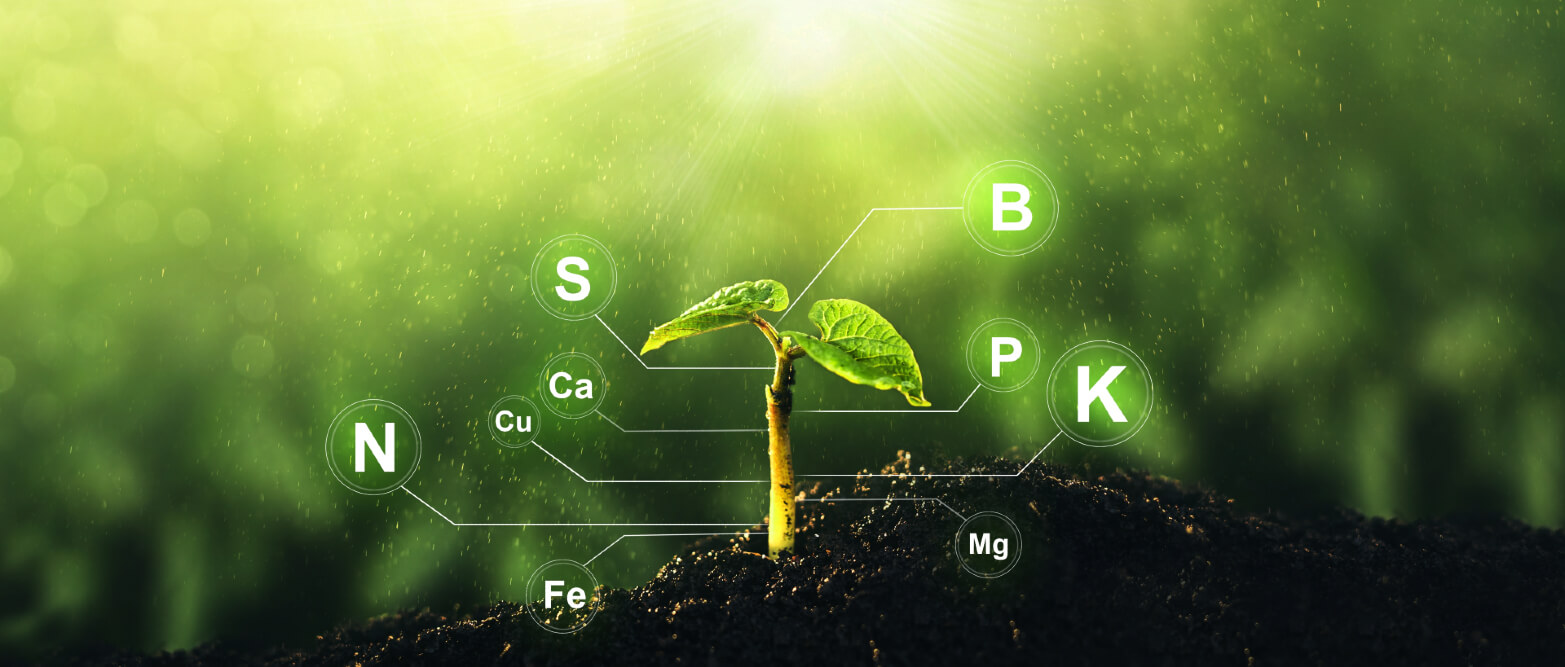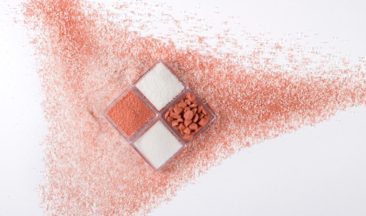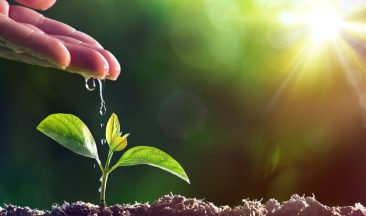Nutrient use efficiency (NUE) is the ability of plants to use fertilizer efficiently for growth and development. NUE is often used in regard to nitrogen specifically. Phosphorus (P) and Potassium (K) use efficiency are commonly referred to as PUE and KUE respectively.
In agriculture, improving NUE is crucial for sustainable crop production because nitrogen is a vital nutrient for plant growth and development, but the excess application of nitrogen fertilizers can lead to environmental problems as well as economic losses. Therefore, enhancing NUE is essential for increasing agricultural productivity while minimizing the environmental footprint of agriculture.
Nutrient use efficiency is a critical factor in sustainable farming practices. It allows farmers to optimize crop productivity while reducing negative environmental impacts. Sustainable agriculture aims to meet the growing demand for food while minimizing the use of non-renewable resources and reducing the environmental footprint of agriculture.
Fertilizers are a significant input in modern agriculture. Improving nutrient use efficiency helps to make fertilizer use optimal, increase crop yield, and maintain soil fertility, thereby enhancing the resilience of agricultural systems.
Sustainable farming practices, such as precision farming, cover cropping, and crop rotation, are designed to enhance nutrient use efficiency by promoting natural nutrient cycling and reducing nutrient losses. By improving nutrient use efficiency, sustainable farming practices can enhance the economic viability, social equity, and environmental sustainability of agriculture.
Ultimately, part of the definition of nutrient use efficiency is a measure of the amount of a nutrient that is taken up by the plant and used for its intended purposes, such as protein synthesis or photosynthesis, relative to the amount of the nutrient that’s applied.
Calculating Nutrient Use Efficiency
Calculating nutrient use efficiency is a key step in determining how to increase it. Cristian Terrones, the Sustainability Specialist on ICL’s Agronomy Team, has had ample experience with NUE in his eight years with ICL. His focus is on helping farmers achieve their sustainability-related goals by finding and delivering the best tools to support them.
“Nutrient Use Efficiency is a part of the tools we can use to improve [biodiversity]. NUE is basically an index of how well a nutrient is being used by a crop. You can evaluate how much of the nutrient was taken up by the plant. Or you can evaluate it by seeing how much yield was achieved per unit of nutrient added,” said Terrones.
Nutrient use efficiency can be expressed in different ways, where the most accurate are agronomic efficiency (AE), physiological efficiency (PE), and apparent recovery efficiency (ARE).
Agronomic efficiency (AE) measures the amount of yield produced per unit of fertilizer applied, while physiological efficiency (PE) measures the amount of yield produced per unit of nutrient taken up by the plant. Apparent recovery efficiency (ARE) measures the proportion of applied fertilizer that is taken up by the plant. For all these parameters it is necessary to correct for the nutrients supplied by the irrigation water and soil itself, which requires having plots without fertilization (zero plots).
For this reason, these parameters are common for research and trial purposes but not for common farmers. A more realistic indicator is the Partial Factor Productivity (PFP), which is similar to the AE but without correcting for the nutrients coming from soil and water.
Nutrient Efficiency Ratio
Nutrient efficiency ratio (NER) is a useful tool for assessing the overall nutrient use efficiency of crops, as it takes into account the interactions between multiple nutrients and the impact of nutrient imbalances on plant growth.
NER is a measure of how efficiently plants use multiple nutrients simultaneously to produce biomass. Calculating NER involves dividing the dry matter yield of a plant by the sum of the amounts of multiple nutrients taken up by the plant, such as nitrogen, phosphorus, and potassium.
A higher NER indicates that the plant is using nutrients more efficiently to produce biomass, while a lower NER suggests that the plant is not using the nutrients efficiently and may be limited by one or more nutrients. The nutrient efficiency ratio can be used to evaluate the effectiveness of nutrient management practices and to identify opportunities for improving nutrient use efficiency in crops.
Factors Impacting Nutrient Use Efficiency
There are several factors that can impact nutrient use efficiency, including soil conditions, weather, plant genetics, and management practices. Soil conditions such as pH, CEC, texture, and structure can affect nutrient availability and uptake by plants. For example, acidic soils may limit the availability of phosphorus, while alkaline soils will limit the availability of micronutrients, and compacted soils may restrict root growth and nutrient uptake.
Weather conditions such as temperature, moisture, and light can also affect nutrient use efficiency by influencing plant growth, nutrient uptake, and nutrient loss through leaching or volatilization. Plant genetics also play a significant role in nutrient use efficiency, as different crop varieties may have different nutrient requirements or uptake capacities.
Strategies for Improving Nutrient Use Efficiency in Plants
Given the importance of nutrient use efficiency, it’s no wonder that agronomists and farmers might be looking for answers on how to improve it on their land.
There are several ways that farmers can improve nitrogen use efficiency on their land, including
- Optimizing fertilizer application rates involves applying the right amount of fertilizer to match crop demand, based on factors such as soil type, crop type, and yield goals. This can be done by using soil tests, plant tissue tests, or predictive models to estimate crop needs and adjust fertilizer rates accordingly.
- Using precision fertilization techniques involves applying fertilizers in a way that matches crop demand and minimizes losses, such as by banding or side-dressing fertilizer near the roots of the crop. This can help to reduce the amount of nutrients lost through volatilization or leaching and improve the efficiency of fertilizer use. Another important strategy is the use of Enhanced Efficiency Fertilizers (EEF) such as Controlled Release Fertilizers (CRF), which offer the highest efficiency by simultaneously reducing all losses.
- Adopting conservation tillage practices such as reduced tillage or no-till farming, can help to improve nitrogen use efficiency by reducing soil disturbance and promoting the buildup of organic matter in the soil. This can help to improve soil structure, increase soil water-holding capacity, and promote nutrient cycling, leading to improved crop growth and nutrient use efficiency.
- Incorporating cover crops into their rotations can also help to improve nitrogen use efficiency by promoting nitrogen fixation, reducing soil erosion, and improving soil health. Cover crops can help to capture residual nitrogen in the soil and prevent it from being lost through leaching or runoff, while also improving soil structure and nutrient availability for subsequent crops.
Overall, nutrient use efficiency is influenced by multiple factors, and improving it requires a holistic approach that considers the interactions between soil, plant, weather, and management practices.

ICL Innovation for Nutrient Use Efficiency
ICL has long been focused on creating sustainable solutions to support agriculture in feeding a growing population. Through innovations in biostimulants and controlled-release fertilizers, ICL enables farmers to take leaps toward improving nutrient use efficiency in crops.
Biostimulants
Biostimulants stimulate soil activity to increase nutritional element availability for a crop, especially in conditions where heat, drought, or disease stress are limiting or removing nutrient uptake opportunities from the plant’s roots. Through increasing soil microbial activity and stimulating root growth and development, more root surface area is available and the plant can access more nutrients from the soil.
ICL biostimulants have been shown to increase crop yields and improve crop quality while reducing the use of chemical fertilizers. They can be used in combination with conventional fertilizers or other crop protection products, making them a versatile tool for farmers to optimize crop growth.
Overall, ICL biostimulants offer a sustainable and effective solution to improve nutrient use efficiency in agriculture. By supporting better plant growth and development, biostimulants can help farmers to increase yields and enhance the sustainability of their farming practices.
Controlled Release Fertilizers
Controlled-release fertilizers (CRFs) are highly efficient in providing nutrients to crops and can release them gradually over an extended period. Unlike conventional fertilizers that dissolve immediately after application and require multiple applications, CRFs reduce nutrient losses to the environment and support better nutrient use efficiency. By matching the nutrient needs of crops with CRF’s nutrient release, it leads to optimal growth, and reduces nutrient leaching, volatilization, denitrification, and run-off. Additionally, CRF can maintain or increase crop yields with lower total nutrient inputs, making it an important solution in regions where regulations limit nitrogen inputs.
In seed potatoes, the Agromaster Coated N treatment delivered an approximate 12% more yield per unit of applied nutrient and a 14% higher return on investment. This study and many others highlight the clear benefits of controlled-release fertilizers in improving nutrient use efficiency in crops.
More on the subject:
The Importance of Biodiversity to Sustainability and the Future of
Agriculture
10 Best Practices to Reduce Carbon Footprint in Agriculture
Top 10 Agriculture Trends to Watch in 2024
NUE and Innovation for a Better Future
NUE is a critical metric for sustainable agriculture. Improving NUE can help minimize agriculture’s potential environmental impact while maintaining or increasing crop yields. Sustainable agriculture practices, such as precision fertilization or using biostimulants or controlled-release fertilizers, can support improving NUE. Ongoing research and innovation into nutrient use efficiency are crucial to help farmers improve their practices. Research can identify new technologies and practices that optimize nitrogen use while minimizing environmental impact. ICL is proud to lead the charge in identifying new and innovative ways to improve NUE and maintain a healthy world for us all








